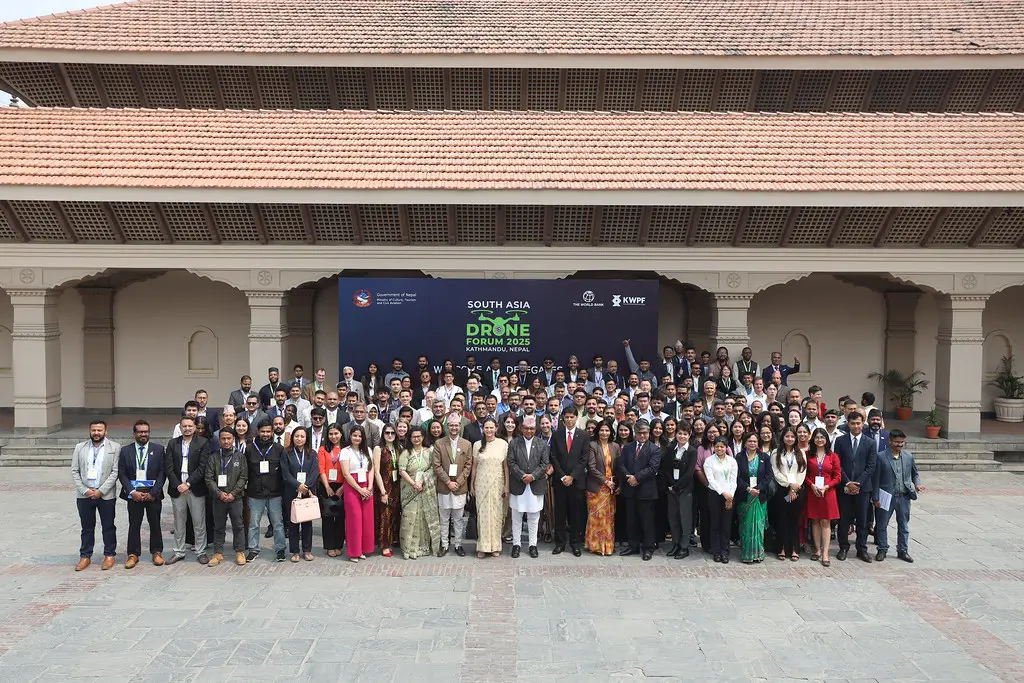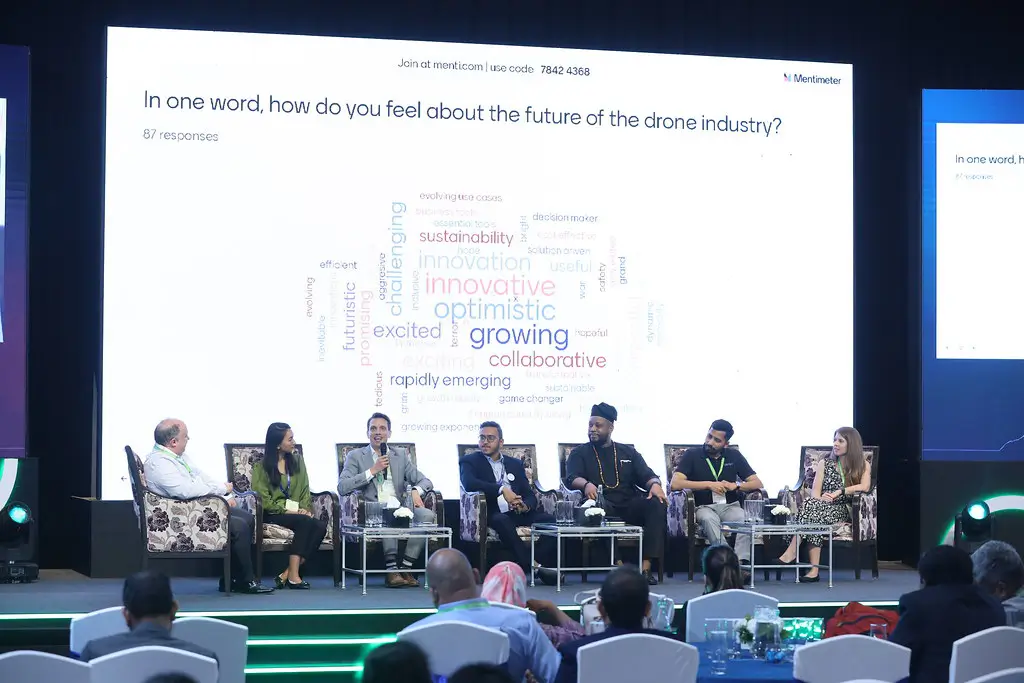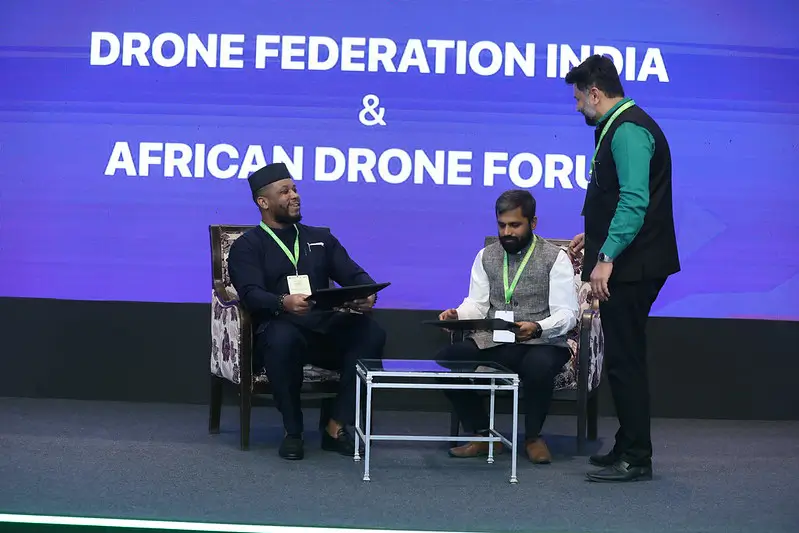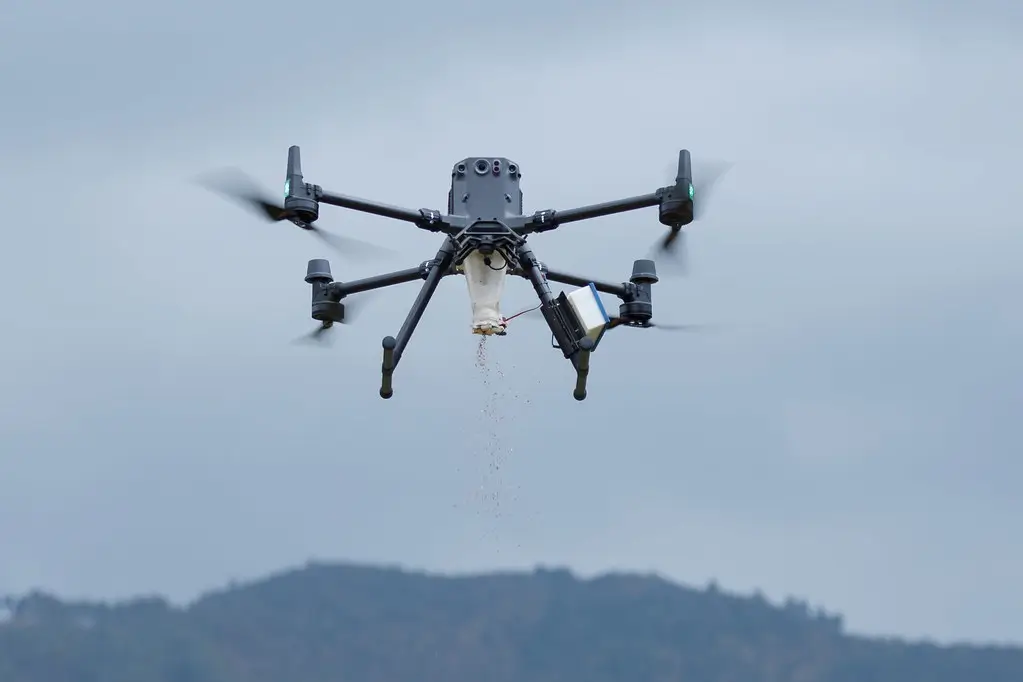By: Eno Umoh, AG Business & Entrepreneurship Ambassador
We often don’t hear a lot about drones in South Asia. The South Asia Drone Forum changed all of that. The forum, held this April in Kathmandu, Nepal, and led by the World Bank in partnership with Nepal’s Ministry of Culture, Tourism, and Civil Aviation, brought together key players from across the drone ecosystem. Over three packed days, attendees from government agencies, private sector companies, universities, nonprofits, and drone associations came together to talk shop innovation and lay down the groundwork for real collaboration across the region.
Representatives came from across South Asia: India, Nepal, Bangladesh, Bhutan, Sri Lanka, Pakistan, and the Maldives. But the conversations stretched beyond the region. Delegates and speakers also joined from Africa, Europe, and the United States. And it wasn’t just panels and pitches. It was a working event. The goal: figure out how to scale drone programs in a way that makes sense for this region, and how countries can support each other instead of working in isolation.

Necessity Drives Innovation: Nepal’s Drone Evolution
What made this forum unique was how rooted it was in context. Nepal’s drone journey didn’t begin with policy memos or academic research. It sprung out of necessity. After the devastating 2015 earthquake, drones made their mark by doing what other tools couldn’t—mapping damaged areas, locating survivors, assessing structural risks, and helping humanitarian teams reach communities cut off by landslides and collapsed roads. That moment showed the international community what drones were capable of. And over the last decade, those early humanitarian use cases have evolved.
Today, Nepal—and much of the region—continues to explore a broader range of drone applications: agriculture, last-mile delivery, environmental monitoring, infrastructure inspections, even search and rescue in mountainous terrain. But progress hasn’t always been coordinated. Different countries have moved at different speeds. Some have regulatory frameworks in place; others are just getting started. And while the talent and interest are there, support structures like pilot training, testing corridors, and local manufacturing capacity still need work.
That’s where this forum came in. Rather than focusing on overblown hype, it focused on real, practical applications. What’s already working. What still needs alignment. What kind of policy, infrastructure, and training environments need to be in place for drone programs to scale responsibly. It asked practical questions: How do we help more young people enter this field? How do we avoid duplication across borders? How do regulators, companies, and communities stay on the same page?
And most importantly: How do we make sure drones are solving problems that matter?
By creating space for regulators, engineers, entrepreneurs, and educators to speak directly to each other—and to learn from peers in other countries—the forum gave South Asia something rare: a shared starting point. Not a one-size-fits-all plan. But a common agenda.
As I always say, the aim is to find local solutions for local problems, and not assume that because something works in one region, there will be automotive adoption in another. And Kathmandu felt like a real inflection point for a region that’s ready to build—not just technology, but systems that can last.

Real Conversations, Not Just Tech Demos
Over three days, the forum covered a lot of ground. Topics ranged from entrepreneurship to drone data, AI, and national test sites. Panelists spoke openly about challenges, from lack of funding, fragmented regulation and limited training capacity, to what’s actually working on the ground.
There were also hands-on workshops, ranging from drone data analytics using AI and youth training and career pathways to UTM and BVLOS operations and “Drones for Development,” a theme that came up in almost every session.
That last one stuck with me. Because this wasn’t a tech-first event. It was needs-first. People were asking: How do we make drones useful to farmers, emergency responders, and public health workers? What do schools and startups actually need to get going?
Local Innovation on Full Display
On Day 3, things moved outside. The final day included a series of live demonstrations featuring drones built in the region, with many from Nepal. And it wasn’t just prototypes. They were tested systems with real applications: fire detection, seed dropping, thermal scanning, and more. One team flew a drone built for search and rescue in mountain terrain. Another showcased a multi-rotor designed for high-altitude cargo delivery. These demos were a strong reminder that South Asia isn’t just adopting drone tech—it’s actively shaping it.
Before the demos, a closed-door session brought together civil aviation authorities from the region. The discussion focused on cross-border coordination, certification alignment, and public trust. No cameras, just honest, technical work on how to move things forward. It’s the kind of collaboration that doesn’t make headlines, but truly matters.

From Waste Clean Up On Mount Everest to The First Drone Delivery
A few moments stood out. One was a project tackling the Everest trash crisis. A drone built in Nepal successfully carried down 15kg of waste from over 6,000 meters. That effort got a lot of attention, and rightfully so. It’s a clean example of how drones can handle missions that are too dangerous or expensive by other means.
Another moment came when Skye Air flew a small payload across Kathmandu. It was the first documented drone delivery of food in Nepal. This was not a test flight, but a real drop. It was a small box, but a big step.
Both examples showed where the drone industry is heading in the region: practical, needed, repeatable solutions.
Building Bridges and Businesses
The forum also gave space for new partnerships. One highlight included that the African Drone Forum signed an MOU with the Drone Federation of India. This sets the stage for future work around policy, joint manufacturing, and talent development.
This kind of cooperation matters. India and Nigeria are projected to be the two most populous countries by 2050. If they’re aligned on standards and workforce goals, it’ll shape how drones scale, not just regionally, but globally. More importantly, it wasn’t a photo-op. It was a working agreement built around shared interest.
Final Take: Trust, Collaboration and Local Context Matter
Kathmandu felt like a turning point because people showed up with serious intent. There’s still a long way to go. Gaps in funding, infrastructure, and regulation remain real problems. But the progress is clear. The community isn’t waiting for perfection. It’s building, adjusting, sharing, and moving forward, together.
This forum reminded me that the drone industry isn’t just about what happens in the boardrooms or the latest funding rounds. It’s about trust, collaboration, and local context. And South Asia has all three.
What happens next will depend on follow-through. But from what I saw in Nepal, the pieces are starting to line up. And people are ready. Are you?
By: Eno Umo, AG Business and Entrepreneurship Ambassador

